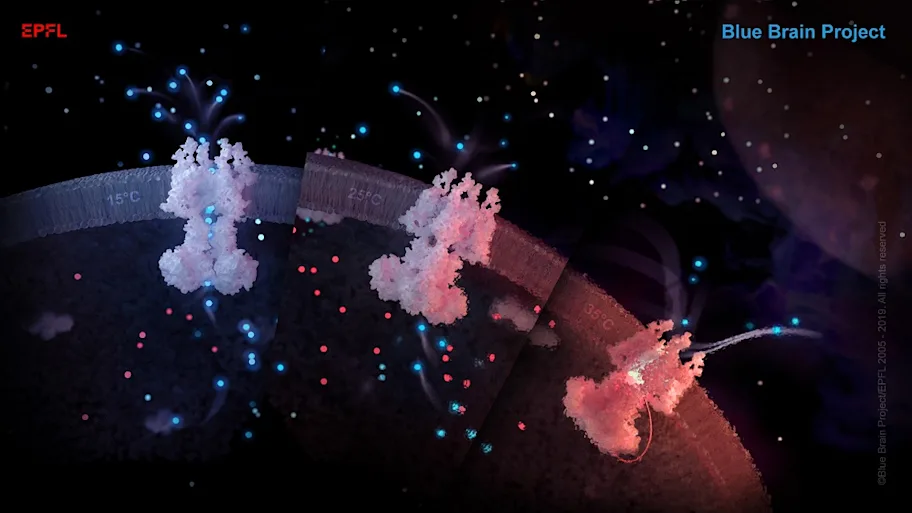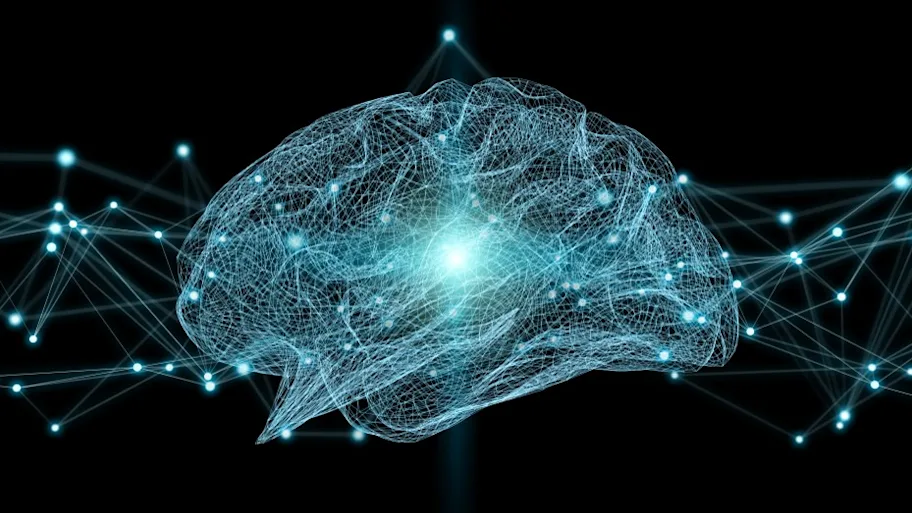
- Science news
- Featured news
- Blue Brain Project releases first-ever digital 3D brain cell atlas
Blue Brain Project releases first-ever digital 3D brain cell atlas
Like “going from raw satellite images to Google Earth”, the Blue Brain Cell Atlas allows anyone to visualize every region in the mouse brain, cell-by-cell – and freely download data for new analyses and modelling.
The first digital 3D atlas of every cell in the mouse brain provides neuroscientists with previously unavailable information on major cell types, numbers and positions in all of the 737 brain regions – which could massively accelerate progress in brain science. Released by EPFL’s Blue Brain Project and published in Frontiers in Neuroinformatics, the Blue Brain Cell Atlas integrates data from hundreds of whole brain tissue stains into a comprehensive, interactive and dynamic online resource that can continuously be updated with new findings. This groundbreaking digital atlas can be used for analyzing and further modeling specific brain areas, and is a major step toward a full simulation of the rodent brain.
A Cell Atlas for the Mouse Brain
► Download original article (pdf)
► Try the Blue Brain Cell Atlas
“Despite vast numbers of studies over the past century, cell numbers were still only available for 4% of mouse brain regions – and these estimates often varied by as much as three-fold,” says Blue Brain Project Founder and Director and Frontiers co-founder and Editor-in-Chief, Professor Henry Markram. “This has limited our efforts to study and model the brain. The Blue Brain Cell Atlas solves this problem and presents the best estimates for all regions of the entire mouse brain that we have today.”
“Knowing the circuit components and how they are arranged is an essential starting point for modelling the brain – just as demographic data are essential for modelling a country, for example,” explains lead author and creator of the Cell Atlas, Dr Csaba Erö.
Previous brain atlases consist of stacks of images of stained brain slices. Some show precise cell positions for the entire brain, while others show particular cell types; but none turns this valuable data into numbers and positions of all the cells in the brain.
This revolutionary step took five years to complete. Erö and colleagues integrated imaging data from the Allen Institute for Brain Science with a large number of other anatomical studies to calculate and validate the major types, numbers, and positions of cells in each area of the mouse brain – including all the regions where cell data was never obtained before.
“Our Cell Atlas is like going from rough maps and raw satellite images to exploring cities and geographical features in Google Earth,” says Blue Brain Section Manager, Dr Marc-Oliver Gewaltig. “It’s 3D, it’s high resolution, it’s searchable, it’s navigable, it’s annotated, it’s user-friendly – and it provides new information.”
Freely available online, the Blue Brain Cell Atlas allows users to visualize all the cells in any brain region, and download their numbers and locations. It distinguishes excitatory, inhibitory and some other types of neurons – as well as major types of non-neuronal cells called glia, which insulate and protect neurons. These data are invaluable for researchers trying to understand the structure and function of different brain regions or for building functional models of specific brain regions.
“It is also a great teaching aid: you can choose to display just the regions of interest and navigate through these down to the scale of individual cells, which are color-coded by morphology,” adds Gewaltig.
The Blue Brain Cell Atlas is dynamic – allowing researchers to contribute to and improve the atlas with any new data.
“The cell numbers, locations and subtypes can now be refined as data are integrated from new experiments,” explains Markram.
“Our message to brain researchers everywhere is: try it, use it, add data to it,” conclude the authors.
Original article: A Cell Atlas for the Mouse Brain
REPUBLISHING GUIDELINES: Open access and sharing research is part of Frontiers’ mission. Unless otherwise noted, you can republish articles posted in the Frontiers news blog — as long as you include a link back to the original research. Selling the articles is not allowed.
About EPFL’s Blue Brain Project
The aim of the EPFL’s Blue Brain Project, a Swiss brain initiative founded and directed by Professor Henry Markram, is to build accurate, biologically detailed digital reconstructions and simulations of the rodent brain, and ultimately, the human brain. The supercomputer-based reconstructions and simulations built by Blue Brain offer a radically new approach for understanding the multilevel structure and function of the brain.
Contributors and Funding
This work was funded by the EPFL Blue Brain Project Fund and the ETH Board Funding to the Blue Brain Project. The work has been performed as an in-kind contribution to the European Union Seventh Framework Programme (FP7/2007-2013) under grant agreement no. 604102 (Human Brain Project) and the European Union’s Horizon 2020 Framework Programme for Research and Innovation under Grant Agreement No. 720270 (Human Brain Project SGA1).
About EPFL
EPFL, one of the two Swiss Federal Institutes of Technology, based in Lausanne, is Europe’s most cosmopolitan technical university with students, professors and staff from over 120 nations. A dynamic environment, open to Switzerland and the world, EPFL is centered on its three missions: teaching, research and technology transfer. EPFL works together with an extensive network of partners including other universities and institutes of technology, developing and emerging countries, secondary schools and colleges, industry and economy, political circles and the general public, to bring about real impact for society.






